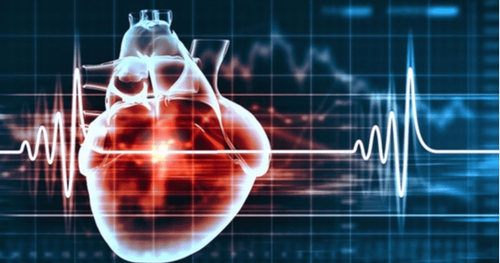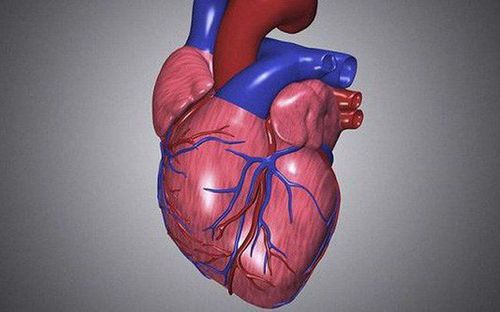This is an automatically translated article.
The article was professionally consulted by Specialist Doctor II Nguyen Bang Phong - Internal Medicine - Cardiovascular Intervention and Head of Heart Failure Clinic, Vinmec Times City International Hospital.Up to now, echocardiography is still the most perfect method to evaluate heart failure in a flexible, routine, accurate and complete way.
1. Echocardiographic parameters
With a configurable Doppler echocardiogram and cardiac transducer, a cardiologist trained in echocardiography for 3-6 months can perform the technique and provide a wide range of basic parameters, Important to evaluate heart failure such as: chamber size, wall thickness, contractility of the 2 ventricles (ejection fraction EF), regional dyskinesia of the left ventricle, ability to left ventricular dilatation (diastolic function), left ventricular filling pressure, pulmonary artery pressure, annular size as well as mitral and tricuspid valve regurgitation, cardiac output...Below are the echocardiographic parameters commonly used to evaluate heart failure (abbreviated in English because of internationalization):
LVDd: left ventricular size at the end of diastole. LVDs: left ventricular size at the end of systole. LVVd: left ventricular volume at the end of diastole. LVVs: left ventricular volume at the end of systole. LA: size of the left atrium. LAV: left atrial volume. RAV: right atrial volume RV: right ventricular size. IVSd: diastolic interventricular septum thickness. IVSs: systolic interventricular septum thickness. PWd: left ventricular diastolic posterior wall thickness. PWs: systolic left ventricular posterior wall thickness. LVEF: left ventricular ejection fraction. %D: left ventricular fiber shortening index RVEF: right ventricular ejection fraction. E: amplitude of the E wave of the Doppler spectrum through the mitral valve A: amplitude of the A wave of the Doppler spectrum through the mitral valve. DTE: E-wave deceleration time. E's: amplitude of the tissue Doppler spectrum of the mitral annulus in the interventricular septum E'l: amplitude of the tissue Doppler spectrum of the mitral annulus in the lateral wall. E/E': ratio of E wave amplitude to E' TAPSE wave amplitude: displacement amplitude of the tricuspid annulus. MAPSE: displacement amplitude of the mitral annulus. CO: cardiac output. PAPs: systolic pulmonary artery pressure PAPm: mean pulmonary artery pressure PAPd: diastolic pulmonary artery pressure. Vmax tricuspid regurgitation: maximum velocity of tricuspid regurgitation flow.

Also assess cardiac output CO (normal CO = 4 -6 liters/min).
To evaluate diastolic dysfunction, more parameters are needed, of which 4 basic parameters include:
E's: normal ≥ 7 cm/s; E'l: normal ≥ 10 cm/s Mean E/E' ratio: normal ≤ 14 Left atrial volume: normal ≤ 34 ml/m2 Tricuspid regurgitation spectrum maximal velocity: normal ≤ 2 ,8 m/s. To evaluate right ventricular systolic dysfunction, two parameters are commonly used: RVEF (normal ≥ 35 %) and TAPSE (normal ≥ 16 mm).
In addition, many other parameters are also analyzed in the diagnosis of heart failure such as the size of the heart chambers, the thickness of the heart walls, the condition of the heart valves, the pulmonary artery pressure...
Although echocardiography can A very important role in diagnosing heart failure, in clinical practice, doctors also apply a number of other techniques to diagnose heart failure more fully:
NT ProBNP test: this substance is often used. increased in heart failure, used to contribute to the diagnosis of heart failure and to evaluate the effectiveness of heart failure treatment. An important effect of NT Pro BNP is to rule out dyspnea that is not due to heart failure. Magnetic resonance assessment of the size and contractility of the heart is very accurate and objective, so it is also used to diagnose heart failure. However, due to the expensive and complicated equipment, the price is quite expensive, so echocardiography is still the preferred choice. It is very important in diagnosing heart failure to determine the cause of the heart failure. Initial medical examination to determine the cause of heart failure. But to accurately determine the cause of heart failure, it is necessary to apply subclinical techniques: routine echocardiography, coronary angiography, stress electrocardiogram, stress echocardiogram, and respiratory function test. ...

2. Routine echocardiography
Equipment: Doppler echocardiogram machine with heart probe and echocardiogram analysis system with standard modes: TM, 2D, color Doppler, pulse Doppler, continuous Doppler, stress echocardiography.. Depending on conditions but equipped with additional features: tissue Doppler, tissue-marking Doppler (mode speckle tracking, 3D probe, transesophageal echocardiogram). In addition, the echocardiogram machine is connected to the electrocardiogram, imaging unit, and image recording. Personnel : Cardiologists with training in echocardiography. It is possible to arrange additional typing and assistant secretaries. The echocardiogram room must be humidified, temperature controlled. Procedures Patient identification: see order sheet, medical record. Fill in patient information: name, age, PID, height, weight.The patient is usually lying on the left side, can change position if necessary. The echocardiographer sits on the right side of the patient, holding the transducer in his right hand, and adjusting the knobs in his left hand.
Apply the gel to the precordial area or to the transducer. If the season is cold, it is necessary to warm the gel before applying.
Perform basic slices and carry out related measurements: slice of left sternal longitudinal axis, left sternal transverse axis, from apex, from below costal margin.Sequence of assessment: left atrial size, A heart by mode 2D and TM. Assess diastolic function by 2D modes (measurement of left atrial volume), pulse Doppler, continuous Doppler, tissue Doppler. Evaluation of heart valves, congenital malformations by 2D, TM, color Doppler, pulse Doppler, and continuous Doppler modes.
Analysis of results: depending on the echocardiogram results, the sonographer will discuss with the examining doctor or treating doctor for a suitable treatment plan. For example, if the EF is low, a plan to diagnose and treat heart failure must be in place; or if heart valve damage, depending on the severity and nature, there is a plan to repair or replace surgery; if the pericardial fluid is large, aspiration or drainage is required; With most congenital heart diseases, there must be a plan for catheter intervention or surgical repair...
Please dial HOTLINE for more information or register for an appointment HERE. Download MyVinmec app to make appointments faster and to manage your bookings easily.














